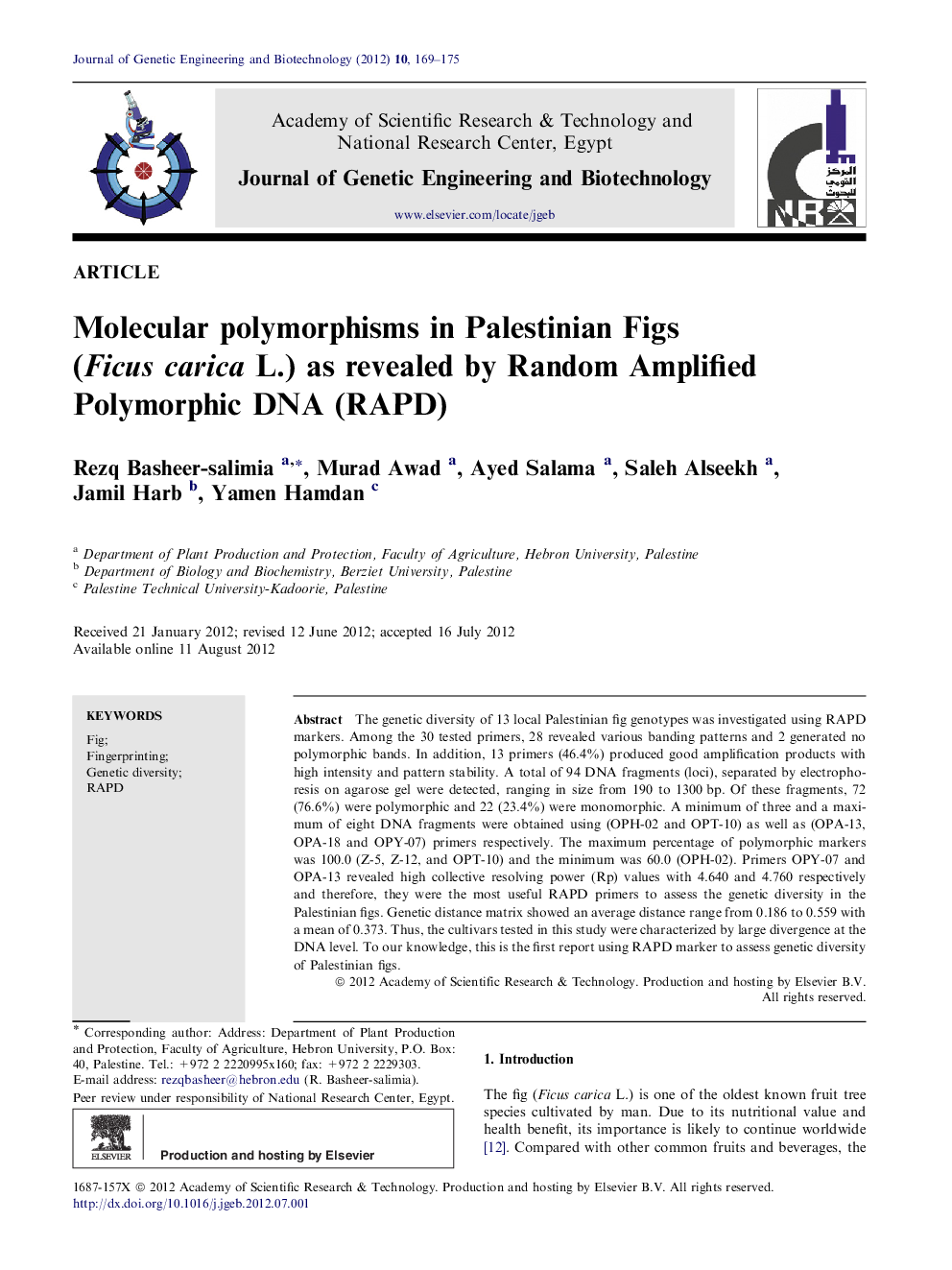| Article ID | Journal | Published Year | Pages | File Type |
|---|---|---|---|---|
| 2087926 | Journal of Genetic Engineering and Biotechnology | 2012 | 7 Pages |
The genetic diversity of 13 local Palestinian fig genotypes was investigated using RAPD markers. Among the 30 tested primers, 28 revealed various banding patterns and 2 generated no polymorphic bands. In addition, 13 primers (46.4%) produced good amplification products with high intensity and pattern stability. A total of 94 DNA fragments (loci), separated by electrophoresis on agarose gel were detected, ranging in size from 190 to 1300 bp. Of these fragments, 72 (76.6%) were polymorphic and 22 (23.4%) were monomorphic. A minimum of three and a maximum of eight DNA fragments were obtained using (OPH-02 and OPT-10) as well as (OPA-13, OPA-18 and OPY-07) primers respectively. The maximum percentage of polymorphic markers was 100.0 (Z-5, Z-12, and OPT-10) and the minimum was 60.0 (OPH-02). Primers OPY-07 and OPA-13 revealed high collective resolving power (Rp) values with 4.640 and 4.760 respectively and therefore, they were the most useful RAPD primers to assess the genetic diversity in the Palestinian figs. Genetic distance matrix showed an average distance range from 0.186 to 0.559 with a mean of 0.373. Thus, the cultivars tested in this study were characterized by large divergence at the DNA level. To our knowledge, this is the first report using RAPD marker to assess genetic diversity of Palestinian figs.
